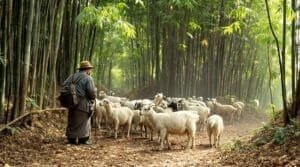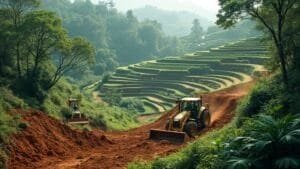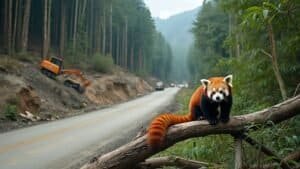Red pandas are facing mounting pressure from a rapidly changing climate, which is altering their high-altitude forest habitats in ways that threaten their survival. So, what role does climate change play in the decline of red pandas? From shrinking bamboo resources and shifting temperature zones to increased risk of forest fires and habitat fragmentation, climate-related stressors are forcing red pandas to move higher, into smaller and more isolated habitats
This article explores how climate change disrupts red panda behavior, movement, and reproduction, while also examining regional vulnerabilities and the conservation strategies underway to help red pandas adapt to an uncertain environmental future
How Climate Change Threatens Red Panda Survival
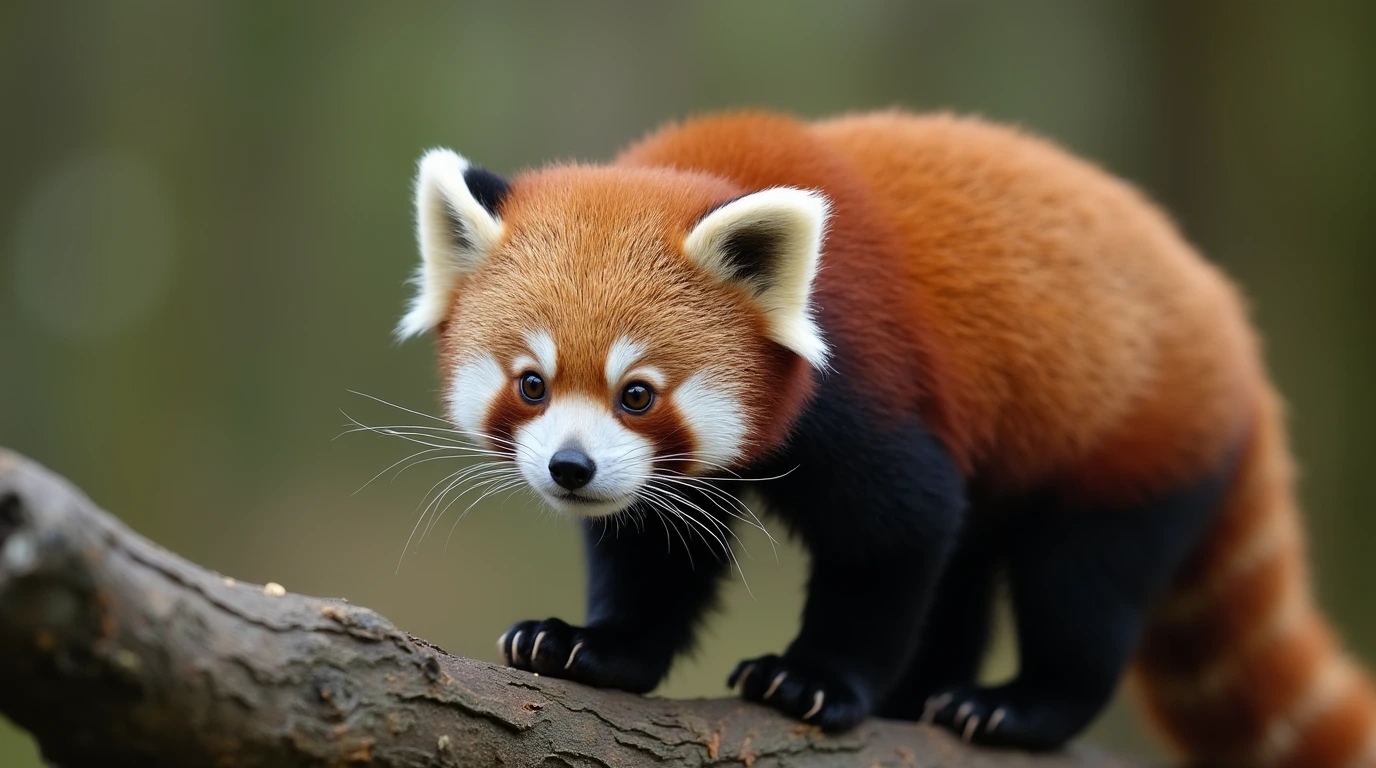
Climate change is increasingly recognized as a major driver of biodiversity loss, and red pandas are among the species most vulnerable to its cascading effects. Native to the cool, temperate forests of the Eastern Himalayas and parts of southwestern China, red pandas are finely tuned to specific climatic and ecological conditions. Rising temperatures, altered precipitation patterns, and an increase in extreme weather events are now undermining the delicate balance these animals rely on, accelerating their decline in the wild
Elevation Shifts and Habitat Range Loss
One of the most significant consequences of climate change for red pandas is the upward shift in their suitable habitat range. As global temperatures rise, red pandas are forced to move to higher elevations in search of cooler, more stable environments. However, this vertical migration comes with substantial ecological and spatial constraints
In mountainous regions like Sikkim and eastern Nepal, the area available at higher altitudes diminishes rapidly. These high-elevation zones are not only smaller but also more fragmented, leading to a reduction in overall habitat size. A study published in Scientific Reports (PMC, 2024) found that climate-driven shifts have already made several former strongholds—like the Minshan Mountains—unsuitable for red pandas due to changes in temperature seasonality and human encroachment
Furthermore, as red pandas climb higher, they often move outside protected areas into zones that lack forest cover or are used for grazing and farming. According to WWF, over 70% of potential red panda habitats in climate-sensitive zones like Sikkim lie outside the jurisdiction of formal conservation efforts. This increases exposure to deforestation, poaching, and habitat degradation
Impact of Rising Temperatures on Bamboo
Bamboo is the cornerstone of the red panda diet, making the species highly sensitive to changes in the conditions that support bamboo growth. Warming temperatures influence not only the geographic distribution of bamboo but also its productivity and regeneration cycle
In red panda habitats, several species of bamboo require specific temperature and moisture regimes. As climate change alters these variables—through erratic rainfall, earlier snowmelt, and prolonged droughts—bamboo becomes less abundant and slower to regenerate. A detailed analysis by the Red Panda Network highlights how bamboo patches in the Himalayas are shrinking in both density and coverage, especially in fragmented forest patches that lack the canopy protection needed to retain soil moisture
Food scarcity due to bamboo loss forces red pandas to forage over longer distances, increasing energy expenditure and risk of predation. It also has implications for reproduction, as lactating females require a higher intake of bamboo nutrients during the cub-rearing period
In addition, natural bamboo die-off events, which occur cyclically every few decades, can become catastrophic in the context of climate change. Without sufficient connectivity between habitat patches, red pandas cannot migrate to new feeding grounds when bamboo in their home range dies off
Climate-Driven Forest Zone Changes
Climate change also affects the composition and health of red panda forests. Rising temperatures and changing rainfall patterns are shifting tree lines upward and altering forest dynamics. Species that provide nesting hollows or contribute to the bamboo microhabitat may become less dominant, replaced by vegetation that does not serve red panda needs
These forest shifts can result in mismatches between food availability and shelter requirements. In some areas, for example, bamboo may persist at a certain altitude while nesting trees move higher or are lost to fire or logging. This spatial disconnect can force red pandas into suboptimal conditions where they face greater environmental stress
Moreover, changing forest structure impacts predator-prey dynamics. Warmer, drier conditions may favor species that compete with or prey on red pandas, such as yellow-throated martens or feral dogs. With less canopy cover and more open forest, red pandas have fewer escape routes and safe resting areas
For a comprehensive view of how red panda habitats are changing due to climate shifts, readers can explore the Red Panda Network’s climate change report, which includes satellite data, species distribution models, and field observations from conservation zones
Environmental Stressors and Fragmentation

As climate change reshapes the Himalayan landscape, red pandas face intensifying environmental stressors that impact their ability to forage, reproduce, and survive. The effects of habitat fragmentation, increased fire risk, and behavioral adaptations linked to climate stress are becoming more pronounced, especially in areas where human development intersects with climate-driven habitat change. These overlapping pressures push red pandas further into ecological corners with fewer resources, less safety, and diminished genetic diversity
Increased Forest Fire Risks in Red Panda Zones
One of the most visible consequences of climate change is the increased frequency and intensity of forest fires. In red panda habitats, longer dry spells and erratic precipitation—both symptoms of a warming climate—have created tinderbox conditions in formerly moist, temperate forests. These fires are particularly dangerous for red pandas due to their low mobility and dependence on specific forest structures
Fires destroy critical bamboo thickets, mature nesting trees, and canopy cover, all of which are essential for red panda survival. Even when red pandas escape the flames, the aftermath can be just as devastating. Burned landscapes offer little food or shelter, forcing red pandas into unfamiliar and often more dangerous areas. According to WWF’s climate impact report, regions in eastern Nepal and western Bhutan are seeing more frequent seasonal fires, which disproportionately affect isolated forest patches where red pandas are already stressed
Additionally, post-fire landscapes are prone to erosion, invasive species colonization, and drying—factors that delay ecological recovery and increase the long-term uninhabitability of these zones
Effects of Habitat Fragmentation on Reproduction
Habitat fragmentation, exacerbated by climate change, presents one of the most direct challenges to red panda reproduction. As forests are broken up into smaller and more scattered patches, red pandas are often left with limited access to key reproductive resources such as secure nesting hollows and reliable bamboo stands
Female red pandas need undisturbed tree cavities—often found in old-growth forests—to rear cubs. Fragmented habitats not only reduce the number of available nesting sites but also isolate females from suitable mates. This genetic isolation can result in reduced gene flow, inbreeding, and a higher incidence of congenital health issues
In a 2024 study published by Scientific Reports, researchers observed that red panda cub survival rates were significantly lower in fragmented forests compared to continuous forest zones, particularly in regions undergoing climate-driven vegetation shifts. The same study noted that breeding intervals were longer in populations confined to marginal habitats, suggesting that environmental stress may also suppress reproductive cycles
Moreover, as climate change shifts the range of suitable nesting habitats upward in elevation, it often results in misalignment between feeding areas (bamboo-rich zones) and nesting sites. This forces females to expend more energy moving between the two, which can negatively impact cub health and maternal care
Behavioral Shifts Linked to Climate Stress
Red pandas are displaying subtle behavioral adaptations in response to climate stress, although much of this research is still emerging. One notable pattern is the increase in ground-based movement, especially in fragmented forests where canopy continuity has been disrupted by fire or drought. While red pandas are arboreal by nature, climate-induced habitat changes are forcing them to spend more time foraging or migrating on the ground, where they face increased threats from predators and humans
Altered foraging behavior has also been reported. In zones where bamboo is dying off or growing less densely, red pandas have been observed expanding their active hours beyond their usual crepuscular (dawn and dusk) patterns. This increased activity is believed to be a response to resource scarcity but comes at a cost—more exposure to predators and greater caloric expenditure
Stress-related behaviors such as shorter rest periods, more frequent travel, and decreased cub playtime have also been documented in red panda populations living near fire-affected zones or areas undergoing rapid vegetation change. These signs of chronic stress may be early indicators of reduced fitness, lower immunity, and eventual population decline
To understand how these stressors interact across a fragmented landscape, WWF’s climate and red panda conservation article offers insights into field-based studies and emerging conservation responses
Regional Vulnerability and Conservation Responses
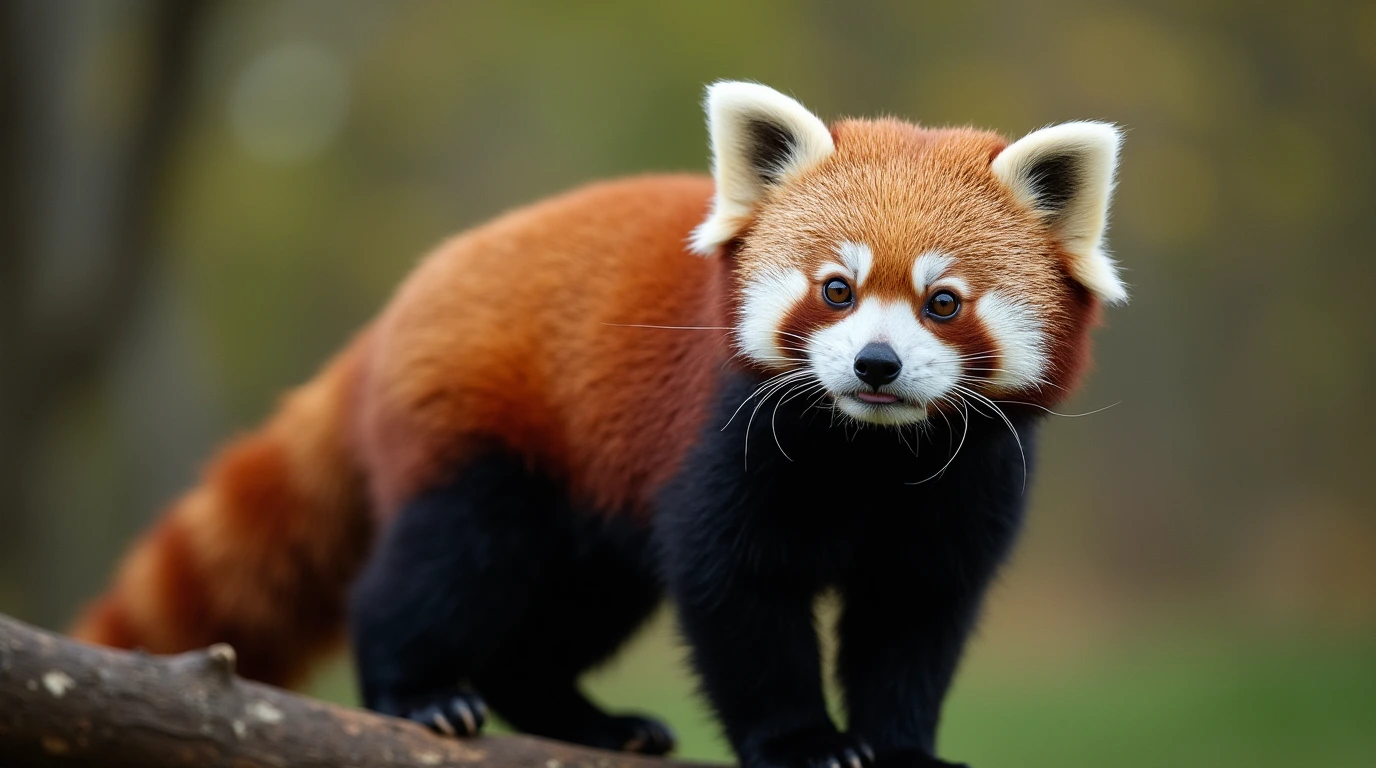
Red pandas live in regions with high ecological sensitivity to climate change, and some areas are more vulnerable than others due to elevation, forest continuity, and levels of human development. Conservation efforts must be tailored to the unique threats and geographic realities of each region to be effective. By identifying climate impact hotspots and promoting adaptive strategies, conservationists aim to give red pandas a fighting chance in a warming world
Geographic Hotspots Most at Risk
Some of the most at-risk regions for climate-induced habitat change include the Minshan Mountains in China, the Kangchenjunga region of Nepal, and parts of Sikkim and Arunachal Pradesh in India. These areas are characterized by both high biodiversity and intense environmental stressors. According to a 2024 study published by the Chinese Academy of Sciences, the Minshan Mountains have already experienced local extinctions of red pandas due to unsuitable temperature conditions and human pressure
In Nepal’s eastern PIT corridor, high elevation forests are becoming fragmented by both climate shifts and human use. More frequent landslides—exacerbated by erratic monsoon cycles—are further degrading these habitats. Red pandas in these zones are increasingly pushed into steeper, less vegetated terrain where bamboo is scarce and nesting trees are limited
The situation is similar in Sikkim, where nearly 70% of suitable red panda habitat lies outside protected areas. These forests are vulnerable to shifting tree lines, warming temperatures, and increased wildfire frequency, all of which reduce habitat quality and connectivity
In Bhutan, while forest coverage remains high, red pandas in mid-elevation zones may soon be affected by shifting climate bands. As bamboo and preferred tree species move uphill, red pandas may face growing ecological mismatches that disrupt feeding and reproduction
Climate-Focused Habitat Protection Strategies
To combat the climate-driven threats facing red pandas, conservationists are implementing adaptive strategies that build ecological resilience and connect fragmented habitats. A major component of this approach is the establishment of wildlife corridors. These corridors allow red pandas to migrate safely between habitat patches, especially during bamboo die-offs or post-fire recovery. In the Kangchenjunga Landscape, transboundary efforts between Nepal, India, and Bhutan are working to formalize and protect such corridors through community forest agreements and conservation easements
Reforestation programs are being redesigned with climate in mind. Instead of simply planting trees, organizations like the Red Panda Network are focusing on climate-resilient native species, especially bamboo and nesting trees that can thrive at higher elevations. These programs not only restore degraded areas but also create upward extensions of red panda habitat, allowing the species to adapt to shifting climate zones
Monitoring and research are also crucial. Satellite imagery, drone surveys, and climate modeling are helping scientists predict where habitat will remain viable in the future. This data informs proactive conservation zoning and helps prioritize areas for immediate intervention
Community involvement is a cornerstone of climate-resilient red panda conservation. Programs that train local stewards to monitor forest health, report wildfires, and manage forest use are essential in maintaining habitat quality. Education campaigns on climate change and wildlife conservation are increasing awareness and reducing pressure on forest resources
International organizations like WWF and Earth.org have also launched advocacy campaigns and funding initiatives to support local efforts. These include sustainable tourism models that promote forest preservation, climate-smart agriculture that reduces deforestation, and technical support for early fire detection systems



